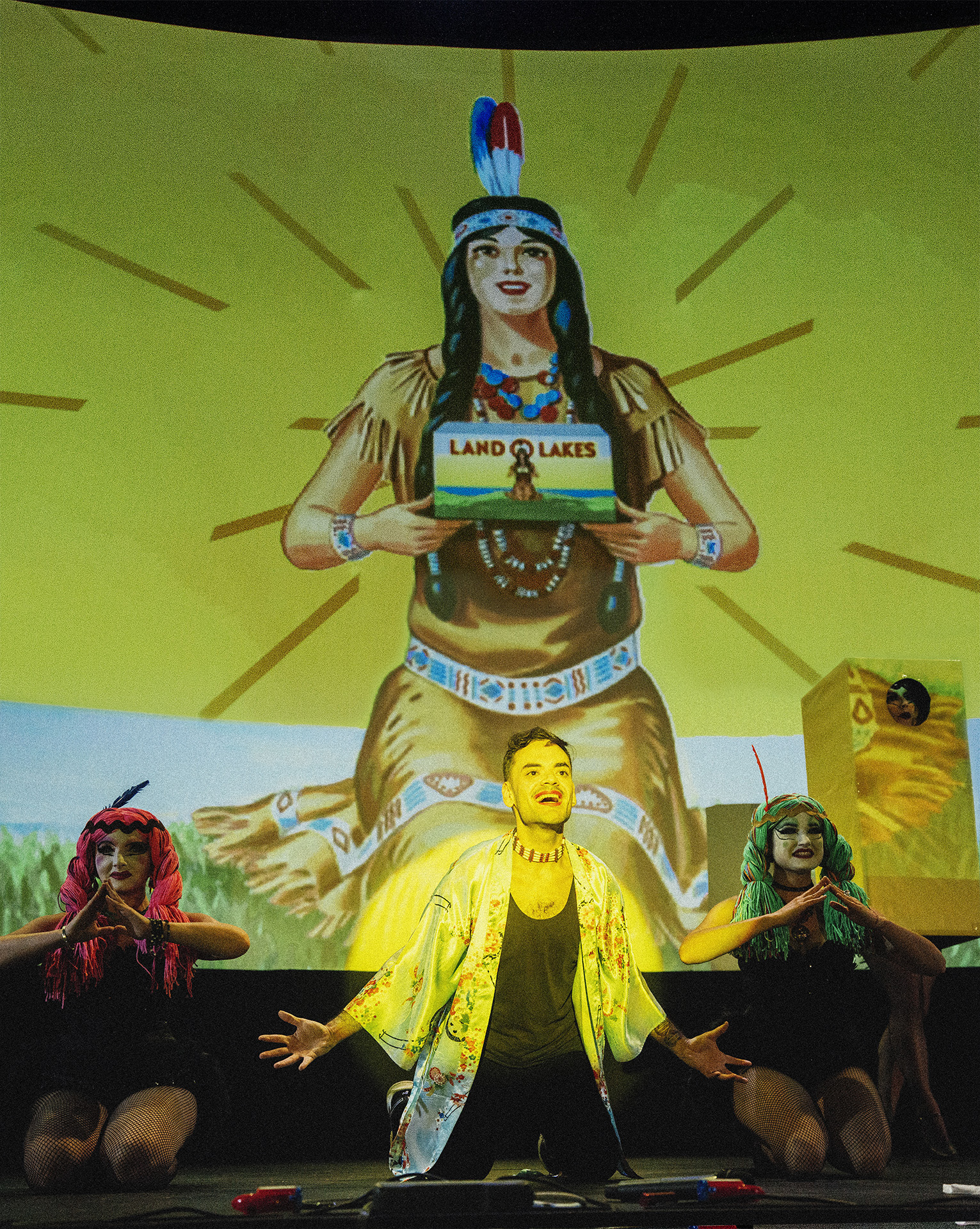Professor Jaclyn Pryor talks art as activism and the work of Anthony Hudson
Portland’s TBA (Time-Based Arts) Festival is an annual celebration that blurs the lines between the participating artists, their art, and the way we, as patrons, consume it. For ten days, TBA gives artists a space to not only perform and show their work, but for the audience to engage and delve deeper into the process behind the art.
There are about as many themes of TBA as there are works of art. Race, gender, ethnicity, pain, division, collision, apathy, and empathy, are just a few of the common threads between pieces. TBA brings together artists from near and far, tying the arts community in Portland to the greater artistic world, and Reed is no exception. Reed faculty Jaclyn Pryor and Marc Burford, as well as Cooley Gallery Director Stephanie Snyder, all contributed to TBA’s conversations series where they spoke with artists about their work and covered topics ranging from politics to trauma and desire.
The Quest had the opportunity to interview theater professor Jaclyn Pryor about their experience with TBA, and their discussion with artist Anthony Hudson about Anthony’s work, Looking for Tiger Lily. Anthony’s work explores their own experiences, in being a “queer, gender non-conforming, indigenous, mixed race person navigating the long history of racist representations of native folks in visual culture,” in Jaclyn’s words. But that’s not all. Anthony’s performance includes Carla Rossi, Anthony’s self-labelled “drag clown” in whiteface, and in turn performs in redface, presenting a complex, layered narrative that forces the viewer to contend with the question of portrayal and what it means. One thing that is especially interesting about Anthony’s performance, and something Jaclyn works with in their own work, is the concept of “showing the strings,” to use Anthony Hudson’s words. In Anthony’s work, their performance makes no attempt to hide the fact that it is costumed. It is art, and it doesn’t want the audience to forget that, to get lost, or to escape to a world separate from our own.
Jaclyn Pryor uses this process in their own work on stage. To “show the strings” is, in effect, a “political intervention” to tie in critiques and themes through the physical production. To show the illusion, to let “the wires show,” as Jaclyn puts it, is how theater can transcend entertainment, and delve into the mechanisms of the world outside the theater. The audience is forced to remember that what they’re witnessing is indeed illusion, lending visibility to the artists’ labor involved in creating each of their works. In a world where increasing aspects of our lives are supposed to seem effortless, it’s a monument to the fact that these experiences are indeed hard work. The themes that Anthony Hudson explores are neither simple nor easy to portray. To break the wall between production and presentation, in the case of Looking for Tiger Lily, is to acknowledge and marvel at both the effort and talent behind the performance. As Jaclyn describes it, “watching people work is spectacular. Like, that’s why we like football. You see how hard it is.”
It’s not uncommon to hear people say “I could do that” as they pass by art in museums. The labor is hidden, and the only thing viewed is the final product. By showing the strings and seeing what’s behind the end result, however, the audience can recognize what goes into a production. The power, the experience, the strength. Jaclyn’s final thoughts centered around Tuesday Smillie’s work and the panel with The Autopoets, another TBA event in which Reed faculty are involved, this time Stephanie Snyder, Curator and Director of the Cooley Gallery. Smillie’s work consists of textile pieces that reimagine political protest banners in an abstract, multimedia way. Jaclyn referenced Smillie’s response to a question about how art is justified as political action, that “for those of us that have gifts as makers, and as teachers, as writers, that is really valuable labor… and so I see theatre and art-making [in] general as a tactic, one of many tactics.” The idea of a multiplicity of tactics, using the language of Adrienne Maree Brown’s Emergent Strategy, is a way to maximize the effect of protests, to get a point across. Especially, as Jaclyn points out, in a space “with an audience in a moment when they’re really interested in having an experience…you know, theatre. We think of it as time outside of time. We’re so busy in our everyday lives, and then here’s a moment where people have, in theater, set aside on average two hours of their evening to feel things. That’s incredibly powerful.”
